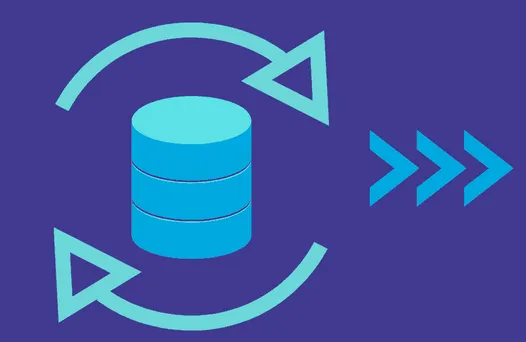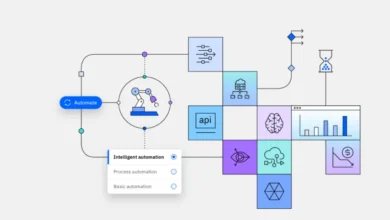Tech
Leveraging CDC for Financial Data Synchronization

Contents
What is CDC and Why is it Important?
Change Data Capture (CDC) is a powerful technique that enables you to track and capture changes made to data within a database system. By monitoring modifications to your data, CDC provides you with valuable insights and capabilities that can significantly enhance your data management and analysis processes.
In the context of Postgres CDC empowers you to:
- Capture and Process Changes: CDC allows you to capture and process changes to your data in real time, providing you with a continuous stream of updates that can be used for various purposes.
- Track Data Evolution: By tracking changes to your data, CDC enables you to monitor its evolution over time, identify trends, and detect anomalies.
- Trigger Actions: CDC can be used to trigger actions based on specific data changes, automating workflows and processes.
- Synchronize Data: CDC can be used to synchronize data between multiple systems, ensuring consistency and data integrity.
- Support Data Warehousing and Analytics: CDC can be integrated with data warehousing and analytics tools to provide a reliable and efficient source of data for reporting and analysis.
- Enable Real-time Applications: CDC can be used to build real-time applications that respond to changes in data, such as online gaming, financial systems, and e-commerce platforms.
Why is CDC important for PostgreSQL?
- Real-time Data Synchronization: CDC can be used to synchronize data between multiple systems, ensuring that all copies are consistent and up-to-date. This is particularly useful for applications that require real-time data consistency, such as online gaming, financial systems, and e-commerce platforms.
- Data Warehousing and Analytics: By capturing changes to your data, you can efficiently populate data warehouses and perform analytics on the latest data. This enables businesses to make data-driven decisions and gain insights into their operations.
- Audit Trails and Compliance: CDC can help you create audit trails to track changes to sensitive data, ensuring compliance with regulations and standards. This is essential for industries such as healthcare, finance, and government, where data privacy and security are paramount.
- Data Migration and Replication: CDC can be used to migrate data between databases or replicate data to standby servers for disaster recovery purposes. This helps to ensure business continuity and minimize downtime in case of system failures.
- Event-Driven Architectures: CDC can be integrated into event-driven architectures to trigger actions based on changes to data. This enables you to build scalable and responsive applications that can react to events in real-time.
Methods of Implementing CDC in PostgreSQL
There are several methods to implement CDC in PostgreSQL:
- Triggers: Triggers are functions that are executed automatically when a specific event occurs (e.g., INSERT, UPDATE, DELETE). By creating triggers on your tables, you can capture changes and store them in a separate table or send them to a message queue.
- Logical Replication: PostgreSQL‘s logical replication feature allows you to replicate data changes from a primary database to a secondary database. This can be used to implement CDC by capturing changes on the primary database and processing them on the secondary.
- Custom Solutions: You can also build custom CDC solutions using PostgreSQL’s APIs and programming languages like PL/pgSQL. This approach offers flexibility but requires more development effort.
Best Practices for Designing and Implementing CDC Solutions
- Identify Your Requirements: Clearly define your CDC goals and use cases to determine the most suitable implementation method. Consider factors such as performance, scalability, and complexity when making your decision.
- Choose the Right Method: Select a CDC method that aligns with your specific needs and constraints. If you require real-time data synchronization and low latency, logical replication might be a good choice. If you need more flexibility and control over the captured data, custom solutions can be considered.
- Optimize Data Capture: Minimize the amount of data captured to improve performance and reduce storage costs. This can be achieved by filtering changes based on specific criteria or using data compression techniques.
- Handle Errors and Failures: Implement mechanisms to handle errors and failures gracefully, ensuring data consistency and reliability. This includes error handling, retry logic, and data recovery strategies.
- Security and Privacy: Protect sensitive data by implementing appropriate security measures and adhering to privacy regulations. This involves encrypting data in transit and at rest, controlling access to CDC systems, and following data privacy best practices.
- Monitoring and Maintenance: Regularly monitor your CDC system to identify and address any issues. This includes monitoring performance metrics, checking for errors, and performing routine maintenance tasks.
Performance Considerations and Optimization Techniques
- Indexing: Create indexes on the columns that are frequently used for filtering or sorting data to improve query performance. This can significantly speed up the process of capturing and processing changes.
- Batching: Group multiple changes into batches to reduce the overhead of individual transactions. This can improve performance and reduce network traffic.
- Asynchronous Processing: Process changes asynchronously to avoid blocking other database operations. This can help to maintain database performance and responsiveness.
- Data Compression: Compress captured data to reduce storage requirements. This is particularly useful for large datasets or long-term retention.
- Hardware Optimization: Ensure that your hardware resources (CPU, memory, storage) are sufficient to handle the load of your CDC system. This may involve upgrading hardware or optimizing resource allocation.
By following these guidelines, you can effectively implement CDC in PostgreSQL and leverage its benefits to enhance your data management and analytics capabilities.



